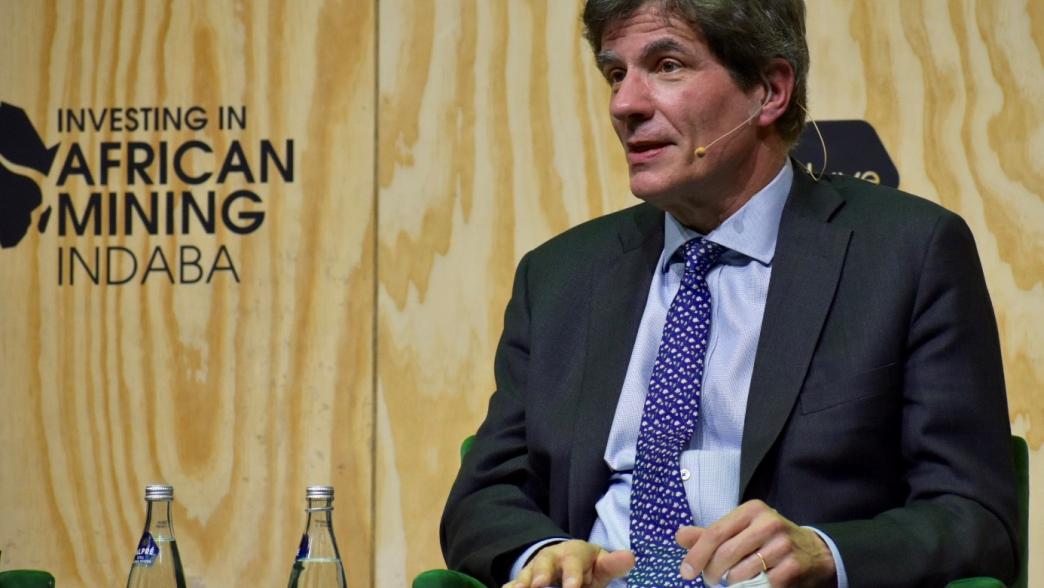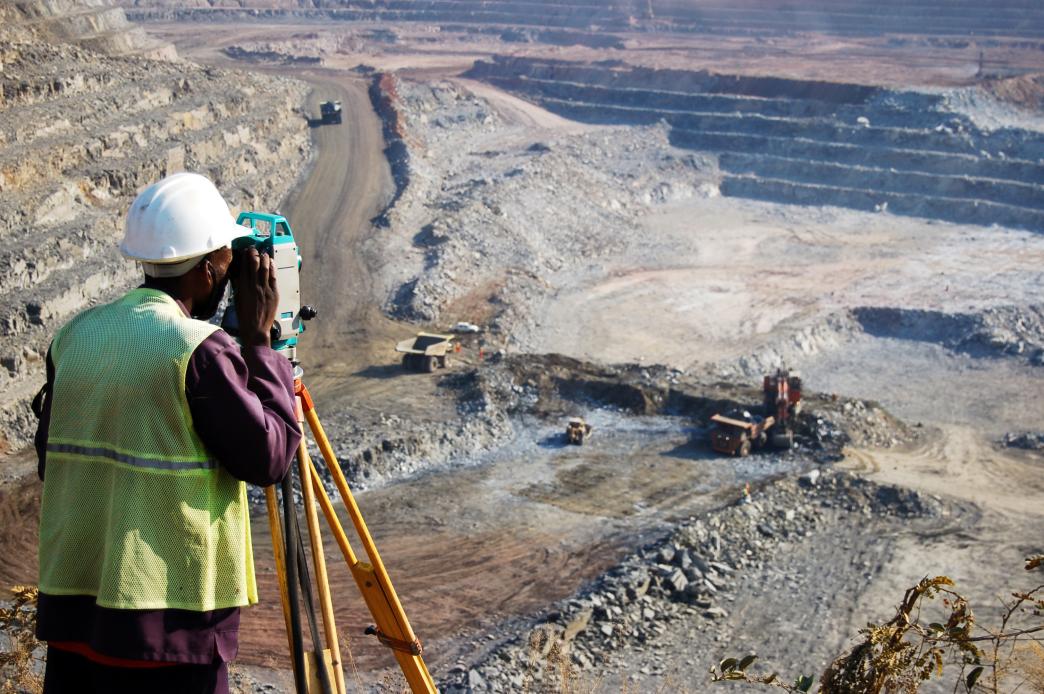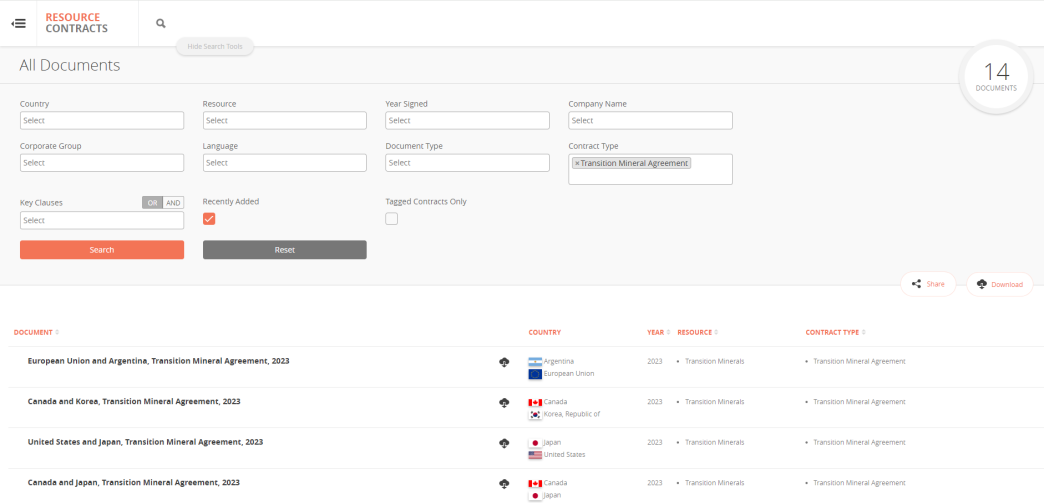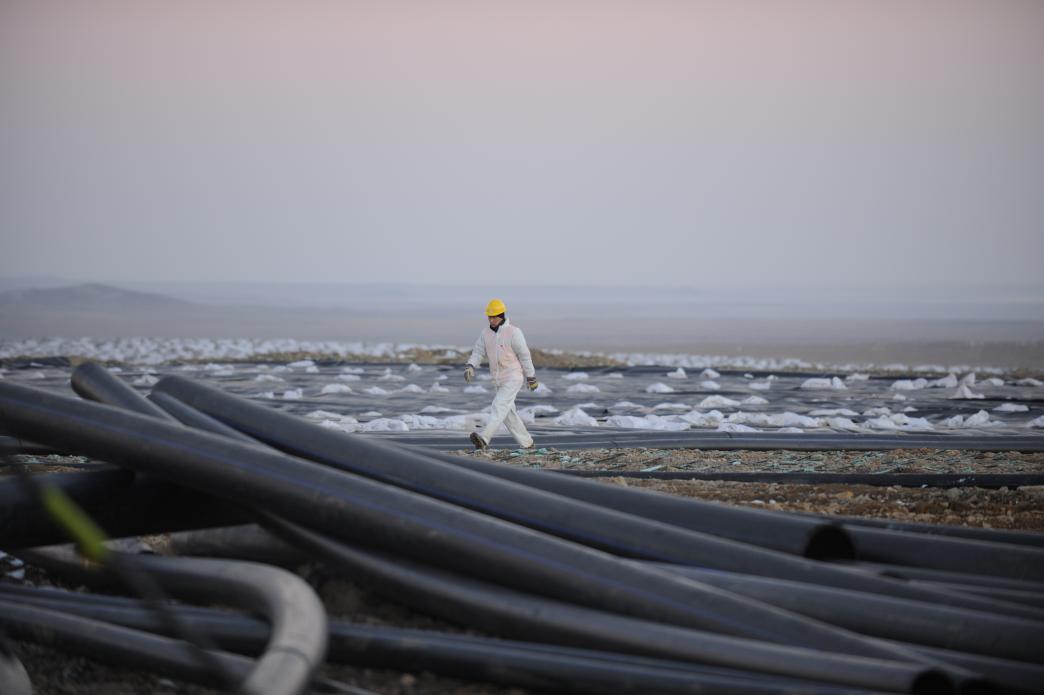
Deals Without Details: Exploring State-State Mining Partnerships and Their Implications
Governments, industry, and civil society organizations (CSOs) are gathering this week for Africa’s Mining Indaba, with big announcements already emerging. The splashiest thus far has been news of a collaboration between the U.S.-led Minerals Security Partnership, Congolese state mining company GECAMINES, and Japanese state agency JOGMEC for mineral exploration, production and processing.
This announcement is the latest in a spate of projects involving the Minerals Security Partnership. In today’s press briefing about the partnership, U.S. diplomat Jose Fernandez reiterated the importance of benefit sharing, value addition, and ESG protections, but shared minimal information on what this would look like in practice; such a dearth of detail characterizes many such deals.
Such next-generation state-state mineral partnerships have become a key tool for wealthier jurisdictions such as the U.S. and EU. Referred to as “buying partners” in this post, their aim is to secure the minerals needed for the solar panels, wind turbines and electric vehicles that will help the world transition away from fossil fuels (in some cases to supplement their own mineral production). But many questions remain around such partnerships, including on their overall purpose and value for lower- and middle-income mineral-rich countries, referred to as “supplying partners” in this post.
NRGI has recently updated ResourceContracts (a repository of publicly available oil, gas, and mining contracts and associated documents) with documents related to this new type of state-state mining partnership (variously labeled “strategic partnerships,” “mineral security partnerships,” “memoranda of cooperation”, and the like).
A new generation of mining partnerships
These partnerships are driven largely by the political or geostrategic needs of the buying partners. Governments in such countries are motivated by the importance of diversifying supply. The partnerships may: lay the groundwork for future cooperation between different jurisdictions, incentivize buyer-country industries to invest in a particular supplier country, and/or merely send a warning shot to international “competitors” that the buying partner has an interest in sourcing minerals from a particular country.
The implications for the supplying partner are even less clear. While buying partners emphasize the language of “partnerships” and “win-win” approaches, whether these partnerships will deliver equal benefits to both parties remains to be seen. These partnerships should be aligned with the supplying partners’ own objectives such as skills development, greater domestic value addition and economic diversification, while also encouraging international cooperation on a just energy transition.
Yet the lack of publicly available information about these partnerships means that scrutinizing them is difficult. This results in little accountability, even though contract disclosure is a well-established norm in the sector. While some memoranda of understanding have been made public, such as those signed by the European Union, these documents are scant on details despite sometimes taking months to negotiate. Others, such as those recently signed by Saudi Arabia at its January Future Minerals Forum, remain a mystery. We couldn’t find any publicly available information about 22 of the 35 partnerships of which we’re aware.
Some partnerships are backed up by a specific authority’s legislative framework, such as those in the EU—although there is still much to improve there in terms of transparency and civil society input—while others are backed by a consortium of countries. Some are agreed with one supplying partner, others with several. Some supplying partners participate in multiple concurrent partnerships, with little clarity over whether or how the relationships interact. The documents we’ve seen are not legally binding, and the relationship between these partnerships and existing trade agreements are unclear. The extent to which the agreements align with supplying partners’ mining or industrial policy frameworks is also largely unknown.
Finding agreements on ResourceContracts
Explore publicly available information partnerships between governments and private entities for critical minerals used in clean energy technologies on ResourceContracts.org under the document type "transition minerals agreements."
What public documents reveal
Across published documents relating to these partnerships, the parties use similar language to describe the potential benefits for supplying partners. Many partnership documents emphasize benefits such as technology transfer, value addition and “ESG,” and also include terms such as open markets. Overall, the agreements reveal little in terms of next steps.
The signing of these partnerships is an early step, rather than a complete solution. EU memoranda of understanding (MoUs), for example, commit to the development, within six months of the MoU being signed, of a “roadmap” that identifies more concrete measures on which the parties will act.
The EU-Ukraine roadmap—the first roadmap to be developed, available on ResourceContracts—provides more detail on areas of cooperation. The EU’s relationship with Kazakhstan could also be instructive, with a strategic partnership signed in November 2022. In recent months, the European Commission and European Bank for Reconstruction and Development announced funding for the Kazakh state mining company Tau-Ken Samruk for lithium exploration and tungsten processing projects. While the amount is fairly small, it may suggest one type of financial support that supplying partners could pursue from their buying partners.
But ultimately most partnerships will rely heavily on their ability to attract commercial investment from the buying partner, or its allies. These countries’ main lever will likely be preferential financing and development assistance to create more attractive conditions for that investment.
How governments in lower- and middle-income mineral-rich countries can leverage these new partnerships
Be clear on what you want from the partnership. Supplying partners should identify ways to leverage market interest in their transition minerals to pursue their long-term strategy for the sector. Governments should target the buying partner’s political, financial and technical capacity, in a way that may be less feasible in partnerships with individual commercial investors. This could range from partners providing technical assistance on geological data management to financing to address the energy bottlenecks standing in the way of commercial investment in value addition, to gaining access to incentives offered in the buying partner’s market, such as through the U.S. Inflation Reduction Act, to increase investor interest.
Establish how the partners interact. Countries entering mining partnerships need to be clear on how they interact. Some partnerships have the potential to complement and amplify each other, such as U.S., EU and U.K. support for the Lobito Corridor—given a further boost in the Mineral Security Partnership’s latest announcement. Others have the potential to complicate the supplying partner’s pursuit of greater benefits. While Chinese authorities and companies don’t publicize their partnerships in the same way, they are not standing still. How lower- and middle-income mineral-rich countries navigate this geopolitical competition will be critical—something which greater transparency around these partnerships can support given it allows governments to learn from other countries’ experience.
Provide support for stronger governance, human rights and environmental standards. Because parties to these agreements aim to increase activity in the sector, they may exacerbate potential harms of mining, such as corruption, human rights abuses and environmental damage. To ensure benefits for people in mining countries, governments must mitigate these risks. In this way they can also meet a key partnership criterion for jurisdictions like the EU. Supplying partners could ensure strong due diligence practices are built into the partnership, require capacity building and technical assistance to strengthen the content and implementation of environmental, social and governance protections, and urge prospective buying partner governments to do more to address wrongdoing by mining companies based in their jurisdictions. Such accountability is crucial to avoid repeating the mistakes of previous commodity booms.
Involve civil society. Countries should facilitate the input of CSOs in decision-making around partnership negotiations. CSOs can serve both as a source of expertise and an accountability mechanism, to ensure that the supplying partner gets the most out of the partnership. CSOs can help define strategic priorities; play a key role in monitoring whether activities advance the country’s economic and social development plans and meet international standards set out by bodies such as the UN and OECD; and strengthen calls for a more equitable partnership. But their participation has been lacking so far, part of a broader trend of shrinking civic space in the extractives sector. If these partnerships remain largely political tools disconnected from actual mining decisions and policymaking, CSOs might find their time more usefully spent elsewhere. Yet CSOs should also look out for a lot of talk, and more importantly money; without evidence of action these are red flags for corruption risk.
We’ll keep an eye out for new partnerships and upload to ResourceContracts those that are disclosed. For those partnerships that have already been agreed, we will upload and assess new documentation as the partnerships evolve, and work with key stakeholders to push for better practices.
For now, we are left considering a key question: when the time comes to turn talk into action, will these partnerships live up to their billing?
Are you aware of an international mining agreement not on ResourceContracts?
Authors

Susannah Fitzgerald
Governance Officer

Phesheya Nxumalo
Program Assistant

Thomas Scurfield
Africa Senior Economic Analyst



